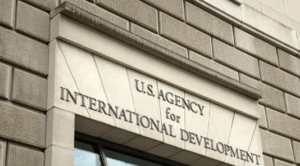The Economic Implications of U.S. Aid to Ukraine: A Closer Look
At Extreme Investor Network, we believe it’s crucial to dissect the economic ramifications of foreign aid, particularly in the context of the ongoing support for Ukraine. The financial landscape of our nation has been significantly affected by decisions made under the Biden administration, while curious patterns have emerged regarding the treatment of domestic businesses versus foreign interests.
The Financial Flow to Ukraine
Since the onset of the conflict in Ukraine, U.S. taxpayers have channeled over $30 billion to support Ukrainian government operations, which include public servants’ salaries, pensions, and healthcare. Moreover, the U.S. Agency for International Development (USAID) has provided substantial backing through various programs. Notably, their "Investment for Business Resilience Activity" disbursed $100 million aimed at bolstering Ukrainian small businesses through grants and financial incentives. While this initiative may have saved approximately 18,000 jobs and supported over 1,050 businesses, it raises the question: at what cost to the American economy?
Domestic Struggles Amid Foreign Support
While Ukraine flourished under this financial umbrella, domestic small businesses faced unprecedented challenges. Post-COVID inflation wreaked havoc on the U.S. economy, yet many entrepreneurs struggled to secure essential business loans. This juxtaposition illustrates an alarming trend—one political faction deepening its involvement with foreign entities while neglecting critical needs at home.
The Shift in Policy Perspective
The recent shifts within the political landscape highlight a growing desire among some leaders to reassess U.S. financial commitments abroad. As the Trump administration seeks to trim funding for Ukraine, new voices, including US Defense Secretary Pete Hegseth, advocate for prioritizing American interests. With the upcoming 2026 Pentagon budget, it is vital to focus on military readiness and the unique needs of U.S. warfighters, rather than distant conflicts that do not directly involve American lives.
The European Union’s Growing Role
Curiously, the European Union has started to shoulder a significant portion of Ukraine’s financial burdens, projected to cover 84% of Ukraine’s operational needs. In 2025 alone, the EU is expected to allocate $40 billion for this purpose. To facilitate, they are employing frozen Russian assets as a key funding source—highlighting the complexity and international implications of this crisis.
The Case for Reevaluation of Priorities
The economic resources dedicated to Ukraine should prompt a reevaluation. Imagine the potential impact if those funds were redirected toward revitalizing the domestic economy instead of perpetuating financial entanglements abroad.
Unraveling the Ties That Bind
Underneath the surface of this financial relationship lies troubling allegations, including claims of influence peddling tied to the Biden family involving substantial sums from Ukraine. The complexities surrounding these allegations only serve to complicate the narrative of U.S. foreign aid.
A Call for Economic Self-Sufficiency
At Extreme Investor Network, our priority is to advocate for investing in American businesses and communities. As the U.S. grapples with issues of inflation and economic instability, it’s high time to reassess our funding priorities—ensuring they reflect the needs of our citizens rather than prop up foreign regimes.
As more citizens question where their taxpayer dollars are being allocated, we must push for a system that genuinely prioritizes economic resilience at home.
Final Thoughts
While the discourse around foreign aid continues, it is imperative to balance international goodwill with domestic responsibility. Let’s advocate for a future where American prosperity comes first, ensuring the success of our homegrown businesses and entrepreneurs.
Stay connected for more insights, analysis, and discussions on how economic policies shape our lives at Extreme Investor Network.

